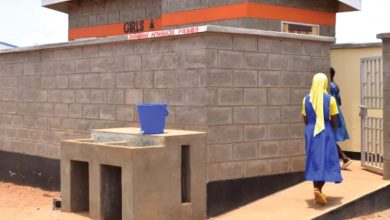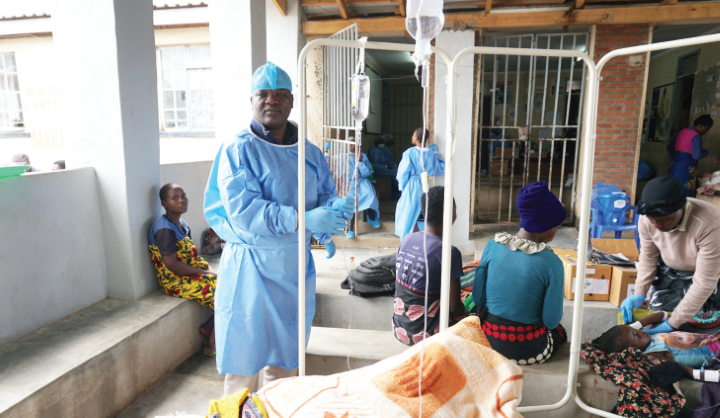Fighting malnutrition the village way
Margaret Piyo, 26, of Kamwendo Village in Mulanje, recalls the day a care giver visited her at home. Upon seeing her son Steven, the care giver told her that the little boy was malnourished. He ran the mid upper arm circumference (MUAC) to confirm his declaration.
Although Piyo had taken Steven to hospital on several occasions, she felt there was little change.

But following advice of the care group volunteer, she decided to take her son to the Community Complementary Feeding Sessions (CCFLS) where mothers from the village cook nutritious meals for all malnourished children in the village.
In two weeks, Steven changed for the better. His appetite increased and he regained his health.
The caregiver was from a community-led project where malnourished children are fed nutritious meals and treated of nutrition-related diseases. The project is run with support from World Vision Malawi (WVM), which trains community members in the preparation of nutritious meals.
Maxwell Litafula, cluster manager for WVM’s Mulanje and Phalombe programmes, understands that although nutrition mainly falls under MDG 1, it underpins the others.
“Good nutrition during the first 1000 days of a child’s life (from conception to second birthday), lays a foundation for life-long healthy growth and development. Building human development capacity is the key to achieving all of the MDGs, yet millions of children continue to have their physical and cognitive potential compromised by poor nutrition,” he explains.
Litafula says this is what convinced the organisation to train community members in the preparation of nutritious meals.
Cecilia Phiri is proud of the change her community has made in lowering maternal and newborn deaths with support from WVM over the 11 years that the organisation has worked with them.
Having been trained in how to prepare nutritious foods from local foods, mothers in the village meet fortnightly to feed all malnourished children identified by members of the care giver teams that were formed following training.
“We were grouped into teams of 10 each and every member visits 10 homes in the community where there are pregnant women and children under the age of five,” says Phiri.
She says on each visit, they monitor whether the family has a good toilet with a hand washing facility and other hygiene-related structures. They also monitor whether these are put to use.
“Through our work, a lot of households have adopted better sanitation practices and it is easy for us to monitor because we visit a sizeable number of households,” she added.
Several mothers in the community agree that courtesy of the caregiver groups, their children have better health and are no longer malnourished. Besides children, pregnant women are also benefiting from the feeding sessions, an assurance that their children will be born healthy and strong, thereby increasing their chances of surviving the first 1000 days of life.
Most leaders of the care groups are women who are happily serving their communities in the hope that no child will die from preventable causes.
“Through our voluntary work we have saved many children’s lives by rehabilitating them through the CCFLS. This is a service that we are doing for our community and it gives us great joy,” says Cecilia, who holds a Junior Certificate of Education obtained a couple of years ago.
Health surveillance assistant (HSA) for the community John Mwangonde is proud of the work that the care groups are doing in the community. He says this has contributed to improved sanitation in the area, in addition to saving children’s lives.
“It is good that the people trained are from within the community because this knowledge is an investment in the community which will give positive returns in future,” he says.
Since inception of the care groups, children in the village are no longer admitted to hospital for nutrition-related causes.
In 2000, world leaders set Millennium Development Goals (MDGs) with 15-year targets to bring significant improvements in survival, well-being and development for the world’s vulnerable populations. From eradicating extreme poverty and hunger; reducing child mortality and improving maternal health to combating HIV, malaria and other infections, the MDGs offered a road map that brought hope for the rural poor and children.
Today, less than 500 days before the expiry of the MDGs next year, remarkable progress has been made. However, more work needs to be done to achieve the MDGs, especially on reducing maternal and newborn deaths.
The strides being made in Kamwendo Village are certainly a step in the right direction.
World Vision is in 26 of the 28 districts in Malawi implementing several projects on health, education and food security, among others.





